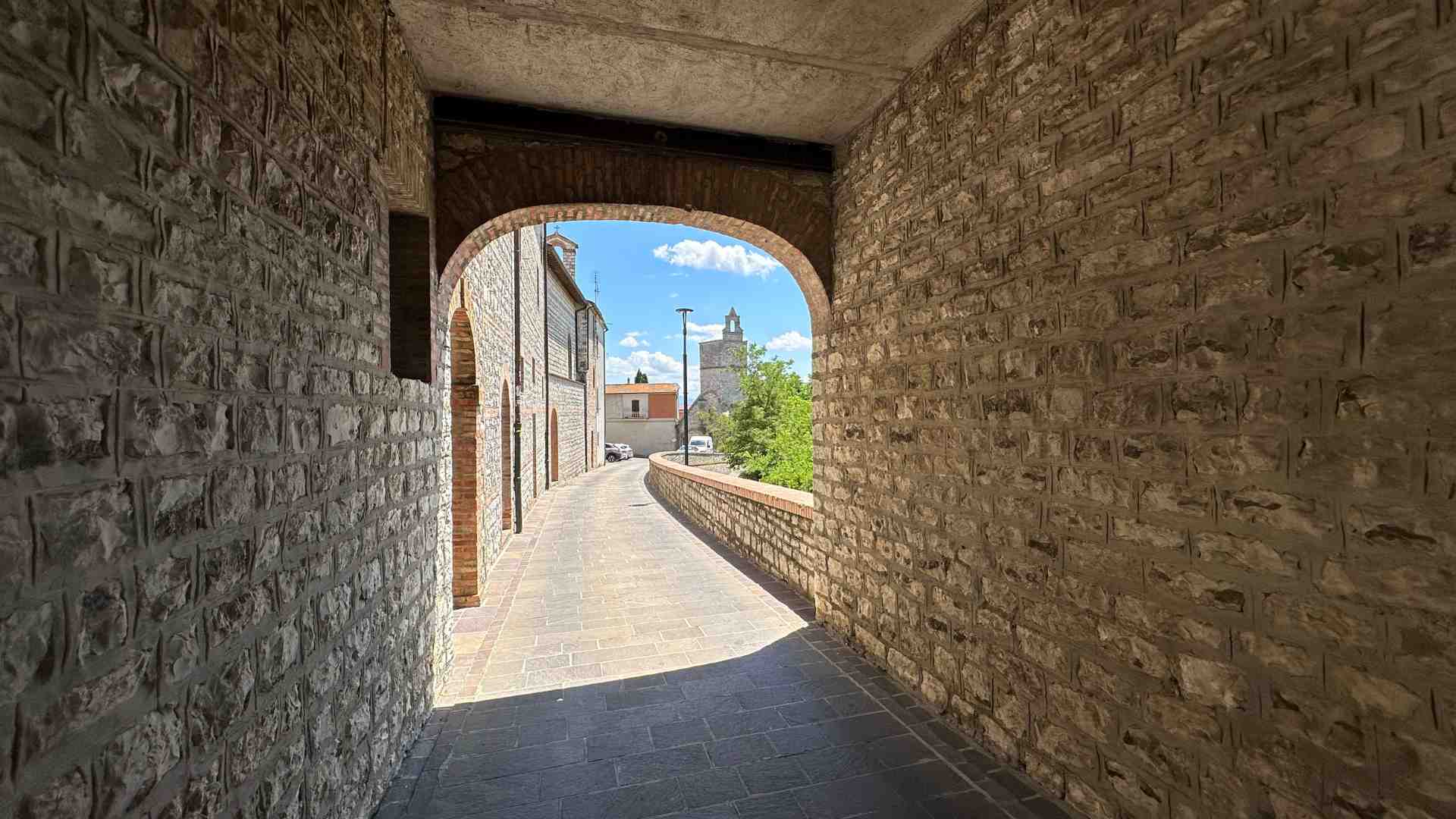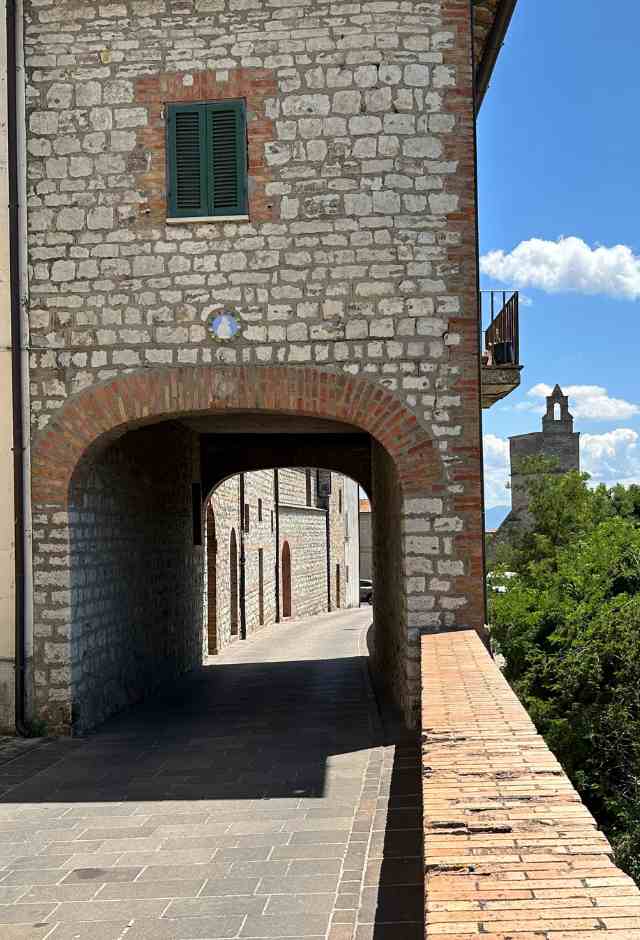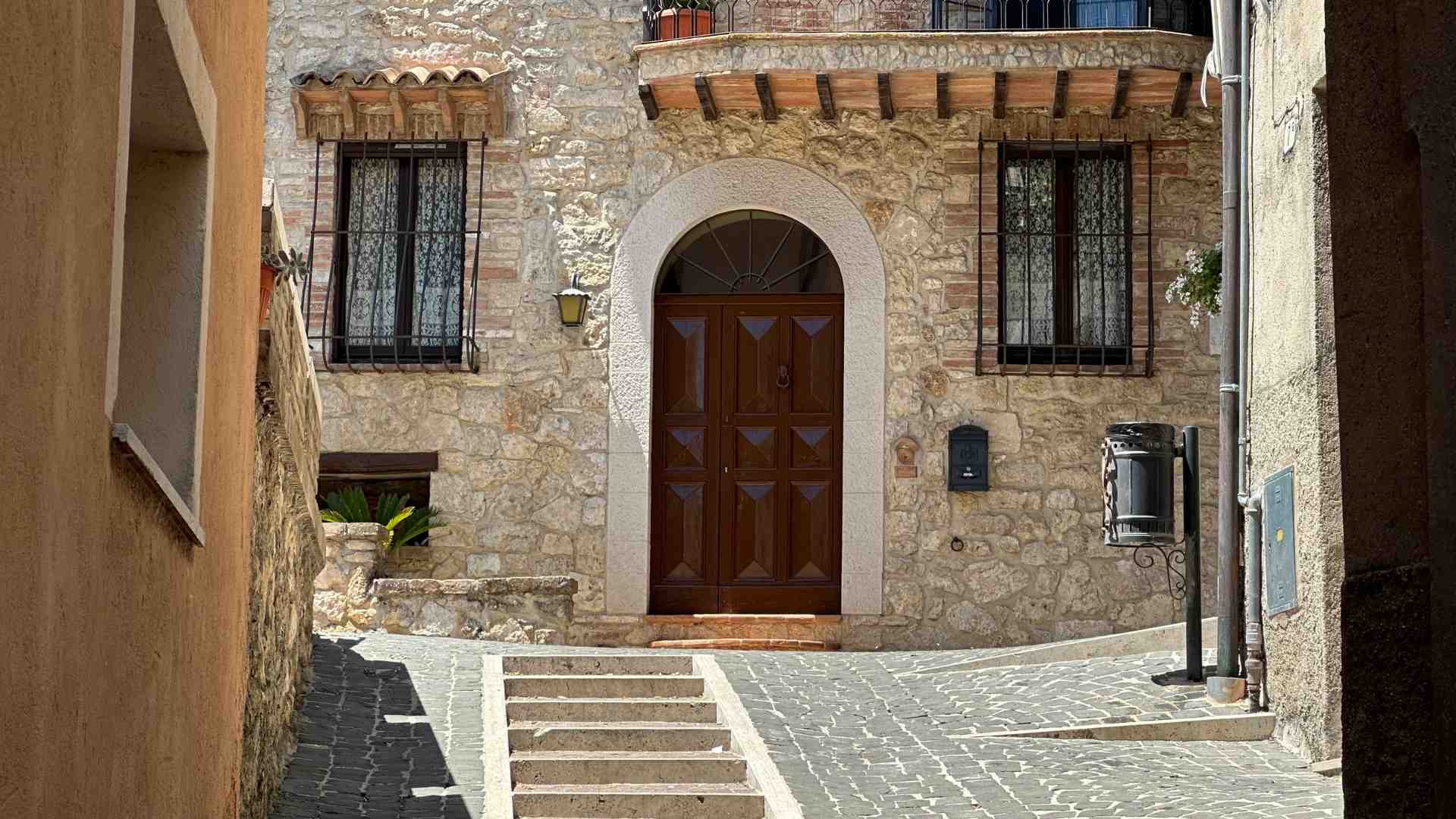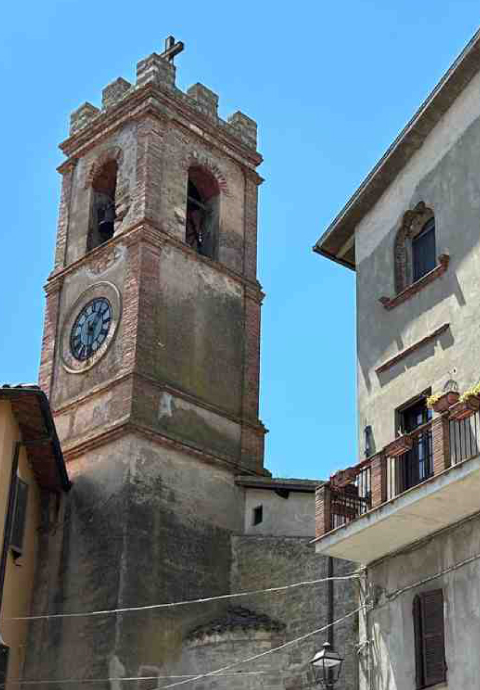
punto di interesse
point of interest


Dominating the Via Ulpiano (road of the Seven Valleys that led from San Gemini to Todi) stood the castle of Quadrelli, now a hamlet of Montecastrilli.
Who knows if it was once a sacred place for the Umbrians as told by one of the many traditions around the origin of its name it is a fact that Quadrelli, today a small medieval jewel in the territory of the municipality of Montecastrilli, was one of the castles of the Terre Arnolfe from February 13, 962 when Otone I of Germany gave it to Count Arnolfo.
Maybe it’s because of the presence of four towers, or because the fearsome square-headed arrow was produced there, the quadrelli-the same one that the Todi eagle, to which it belonged, holds in its talons in the symbol placed above the arch of the Portella-that it was given this particular name.
It was at first a possession of the Arnolfi, then of Todi and it was often the territory of clashes: in the 15th century between Guelphs and Ghibellines, then in the 16th between the Atti and Orsini families.

Dominating the Via Ulpiano (road of the Seven Valleys that led from San Gemini to Todi) stood the castle of Quadrelli, now a hamlet of Montecastrilli.
Who knows if it was once a sacred place for the Umbrians as told by one of the many traditions around the origin of its name it is a fact that Quadrelli, today a small medieval jewel in the territory of the municipality of Montecastrilli, was one of the castles of the Terre Arnolfe from February 13, 962 when Otone I of Germany gave it to Count Arnolfo.
Maybe it’s because of the presence of four towers, or because the fearsome square-headed arrow was produced there, the quadrelli-the same one that the Todi eagle, to which it belonged, holds in its talons in the symbol placed above the arch of the Portella-that it was given this particular name.
It was at first a possession of the Arnolfi, then of Todi and it was often the territory of clashes: in the 15th century between Guelphs and Ghibellines, then in the 16th between the Atti and Orsini families.

Of the original fortification remains, among others still present, the striking irregular pentagonal tower, dating back to the 12th century, built with spoil from the ancient city of Carsulae (link to PDI), with the Porta Urbica known as the “Portella” at its side.
Inside the walls, coeval with the tower, is the Santa Maria Assunta’s Church built in the Romanesque style. The structure, with a single nave and vaulted roof, preserves works inside that trace its evolutionary phase.
The polychrome marble floor from St. Peter’s Basilica in the Vatican, donated by Bishop Nicola Canali and reassembled here in 1934, is interesting. The apse holds a 16th-century fresco of Christ Pantocrator between two angels.
Relevant are the sandstone baptismal font from 1575 and a Roman cippus now used as a stoup.
Several works and frescoes inside identify the church with one of the most striking in our area.
Also of value are the Church of the Holy Rosary and the bulk of the Palazzo Canali descendants of the powerful Chiaravalle family of Todi.
Not to be missed, finally, the Ferragosto in Quadrelli, where – thanks to the hard-working Pro Loco di Quadrelli – the small city is filled with the smells and flavors of the local culinary tradition and music accompanies the evenings within Le Terre dei Borghi Verdi.

Of the original fortification remains, among others still present, the striking irregular pentagonal tower, dating back to the 12th century, built with spoil from the ancient city of Carsulae (link to PDI), with the Porta Urbica known as the “Portella” at its side.
Inside the walls, coeval with the tower, is the Santa Maria Assunta’s Church built in the Romanesque style. The structure, with a single nave and vaulted roof, preserves works inside that trace its evolutionary phase.
The polychrome marble floor from St. Peter’s Basilica in the Vatican, donated by Bishop Nicola Canali and reassembled here in 1934, is interesting. The apse holds a 16th-century fresco of Christ Pantocrator between two angels.
Relevant are the sandstone baptismal font from 1575 and a Roman cippus now used as a stoup.
Several works and frescoes inside identify the church with one of the most striking in our area.
Also of value are the Church of the Holy Rosary and the bulk of the Palazzo Canali descendants of the powerful Chiaravalle family of Todi.
Not to be missed, finally, the Ferragosto in Quadrelli, where – thanks to the hard-working Pro Loco di Quadrelli – the small city is filled with the smells and flavors of the local culinary tradition and music accompanies the evenings within Le Terre dei Borghi Verdi.

Reach Farnetta
Reach Quadrelli
Reach Montecastrilli
Or discover points of interest in Montecastrilli and its area:
A walk through downtown Montecastrilli
The territory of Montecastrilli
discover all the points of interest of the village
Information, appointments and travel proposals on:
The Progressive Web App is part of the project “Le Terre dei Borghi Verdi”, realized in collaboration and with the contribution of Regione Umbria – Assessorato al Turismo
©2021 Le Terre dei Borghi Verdi
Le Terre dei Borghi Verdi
Welcome in Southern Umbria,
where the slowness becomes value
Information, appointments and travel proposals on:
The Progressive Web App is part of the project “Le Terre dei Borghi Verdi”, realized in collaboration and with the contribution of Regione Umbria – Assessorato al Turismo
©2021 Le Terre dei Borghi Verdi